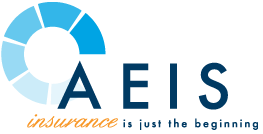Electronic Delivery of ERISA Notices | California Benefit Consultants
Q. Can we provide summary plan descriptions (SPDs) electronically?
A. Yes. However, just sending them is not enough to meet ERISA requirements; you must ensure the intended recipients are actually getting them.
Specifically, ERISA requires SPDs to be furnished using “measures reasonably calculated to ensure actual receipt of the material” via “methods likely to result in full distribution.” Electronic delivery is one way to meet this requirement.
Any electronically delivered documents must be “prepared and furnished in a manner consistent with applicable style, format, and content requirements.” Therefore, it is a good idea to test the electronic document and make sure formatting and style are correct.
Unlike first class mail or hand-delivery options, electronic delivery does not work the same for all recipients. Instead compliance differs depending on whether the recipients:
- Can access the SPD through the employer’s electronic information system (such as email or intranet) located where they are reasonably expected to perform duties: Members in this group must use the employer’s computer system as an integral part of those duties. This covers employees working from home or who are traveling as well.
- Cannot access the SPD through employer’s electronic information system in their workspace (access to a kiosk in a workplace common area is not sufficient). This may include employees as well as non-employees such as COBRA participants, retirees, terminated participants with vested benefits, beneficiaries, and alternate payees: Members of this group must “affirmatively consent” to receive the documents electronically, provide an electronic address, and “reasonably demonstrate” their ability to access documents in electronic form.
Both groups of recipients must be notified of their rights to receive paper copies of the documents (at no charge), and reasonable and appropriate steps must be taken to safeguard confidentiality of personal information related to accounts and benefits. A best practice is for employers to ensure return-receipt or notice of undelivered mail features are enabled. Employers may conduct periodic reviews or surveys to confirm receipt as well.
Just emailing the documents or posting them on the company’s intranet or benefit administration portal is not enough. Each time an electronic document is furnished, a notice (electronic or paper) must be provided to each recipient describing the significance of the document.
Originally Published By www.thinkhr.com



